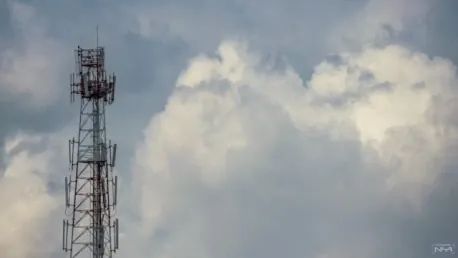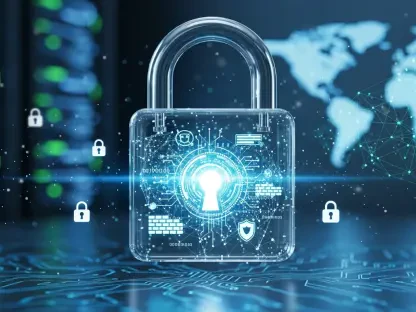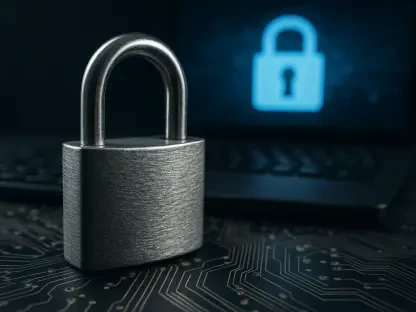A massive cyber intrusion orchestrated by the Chinese-backed hacking group, Salt Typhoon, has targeted critical U.S. telecommunications infrastructure. This breach’s scale and sophistication have alarmed American cybersecurity officials, prompting a comprehensive investigation and extensive measures to mitigate the damage. Major telecommunications providers such as Verizon, AT&T, Lumen, and T-Mobile have been compromised, with dozens of high-value political figures, including individuals linked to President-elect Donald Trump, among the targets.
Scope and Impact of the Breach
Extent of the Intrusion
The scope of the intrusion is vast, with at least 80 firms identified as having been infiltrated or used as stepping stones. The true figure could be higher, as numerous organizations—both telecommunications companies and others—were notified over the past months that they might be at risk. The investigation has revealed several instances where cybersecurity defenses fell short. For instance, one provider’s management system was protected with the weak password “1111,” which, once discovered, provided hackers with a significant foothold inside the system.
Such lapses in security have allowed Salt Typhoon to exploit, infiltrate, and compromise the telecom infrastructure on a wide scale. The extent to which these vulnerabilities have been exploited raises questions about industry standards and the efficiency of current cybersecurity measures in protecting critical assets. Policymakers and security experts are calling for enhanced measures to be implemented to prevent such occurrences in the future. The evidence suggests a failure in both human oversight and system maintenance, reflecting a broader issue within the industry that demands immediate attention and substantial reform.
Exploited Vulnerabilities
Salt Typhoon operated by exploiting known vulnerabilities in systems such as Ivanti, Fortinet, Sophos, and Microsoft Exchange Server. Most of these vulnerabilities were not zero-days but had patches available for quite some time; however, many telecom companies failed to implement them. This negligence allowed Salt Typhoon, associated with China’s Ministry of State Security, to conduct its campaign for likely one to two years, breaching around eight U.S. telecom firms. This period of unmitigated intrusion has posed a serious threat to national security and has questioned the reliability of existing defense mechanisms within the industry.
The breach has exposed the critical gaps in the application and enforcement of cybersecurity protocols. Even when the solutions were available, the failure to act on them resulted in an exposure window that Salt Typhoon efficiently capitalized on. The industry’s collective oversight indicates a need for a centralized approach, where compliance and accountability are enforced through consistent monitoring and evaluation. This situation serves as a cautionary tale for other sectors reliant on digital infrastructure, illustrating the profound consequences of neglecting to update and secure systems in a timely manner.
Comparisons to Previous Breaches
Similarities to SolarWinds Orion Breach
This incident mirrors the infamous 2020 SolarWinds Orion breach, where Russian hackers exploited the password “solarwinds123” to access critical IT systems of numerous U.S. agencies. Much like SolarWinds, the Salt Typhoon breach demonstrates the catastrophic consequences of weak cybersecurity practices. Weak passwords and inadequately secured systems have provided hackers with an open gateway to sensitive data and operational control over vital infrastructure.
In both cases, the breaches have highlighted a recurring pattern of systemic vulnerabilities and the need for enhanced monitoring and rapid response capabilities. These incidents underscore the necessity of not just adopting advanced technologies but also ensuring their continual maintenance and reinforcement against emerging threats. The similarities between these breaches serve as a stark reminder that enhanced vigilance and a proactive defense strategy are crucial in the ongoing battle against sophisticated cyber threats.
Compromise of Lawful Intercept Systems
In addition to compromising telecom firms, Salt Typhoon accessed America’s “lawful intercept” systems, which house wiretap requests used by law enforcement to surveil suspected criminals and spies. Such systems are governed by the Communications Assistance for Law Enforcement Act (CALEA), passed in 1994 and overseen by the Federal Communications Commission (FCC). CALEA inquiries are typically backed by court orders and processed through secure portals. However, the breach of these systems raises significant concerns about the security of communications surveillance mechanisms in the U.S.
The compromise of lawful intercept systems not only jeopardizes ongoing surveillance operations but also exposes the personal information of individuals under investigation. This breach has revealed vulnerabilities in the very processes designed to protect national security and enforce justice. The fact that sensitive data and critical surveillance mechanisms could be accessed by foreign operatives highlights a fundamental weakness that could have far-reaching consequences if not addressed immediately. It emphasizes the need for a robust reevaluation of security protocols governing these systems.
Regulatory and Legislative Responses
FCC’s Proposed Measures
In response to the breach, FCC Chairwoman Jessica Rosenworcel has proposed measures to require telecom firms to secure CALEA systems from unauthorized access and initiated a rulemaking process to mandate annual cybersecurity practice reports from communications providers. These measures are expected to be approved before President Joe Biden leaves office next month.
The initiative aims to ensure that all communication providers adhere to a standardized set of security practices, reducing the risk of similar breaches in the future. By making it mandatory for telecom firms to report their cybersecurity practices annually, the FCC hopes to promote transparency and accountability within the industry. This proposal represents a critical step toward safeguarding essential communication infrastructures against persistent and evolving cyber threats.
Legislative Actions
Moreover, a bill introduced by Sen. Ron Wyden, addressing telecom cybersecurity, emphasizes the need for the FCC to establish mandatory compliance rules, including minimum cyber requirements and annual system testing. Wyden expressed concerns that telecom providers might still dictate their own cybersecurity plans without federal standards, leaving vulnerabilities open to foreign adversaries.
The proposed legislation underscores the need for a more unified and rigorous approach to cybersecurity across the telecommunications sector. By enforcing federal standards, the bill aims to close the gaps that have allowed breaches like the Salt Typhoon incident to occur. The push for minimum cyber requirements and regular system testing is designed to enhance the overall security posture of telecom networks, ensuring that they are better prepared to defend against sophisticated cyberattacks from state-backed actors and other malicious entities.
Efforts to Enhance Cybersecurity
CISA’s Mobile Phone Security Guidelines
The Cybersecurity and Infrastructure Security Agency (CISA) has also issued mobile phone security guidelines for high-value political officials potentially affected by the breach. While these guidelines enhance protection, CISA acknowledges that there is no single solution to eliminate all risks. The guidelines aim to provide a comprehensive framework for securing mobile communications among individuals at heightened risk of being targeted.
Although these guidelines offer valuable advice, they are part of a broader strategy that must be continuously updated and adapted to address new threats. By focusing on high-value political figures, CISA underscores the importance of protecting individuals whose communications are critical to national security and governance. The guidelines represent a proactive step toward mitigating the risks posed by mobile vulnerabilities, but they also highlight the need for ongoing education and vigilance.
Challenges in Updating Security Practices
Addressing the security flaws and updating practices across the telecom industry will be a complex and costly endeavor. Modern telecom networks are a mix of old technology and contemporary digital infrastructure, and outdated security practices have led to vulnerabilities that Salt Typhoon exploited. These challenges necessitate a comprehensive overhaul of current systems, integrating advanced technologies with existing frameworks to create a more resilient security posture.
The process of modernizing telecom networks involves significant investment in both technology and training. It requires collaboration between government agencies, industry leaders, and cybersecurity experts to identify and implement best practices. The goal is to create an adaptable and robust infrastructure capable of withstanding future cyber threats. This endeavor will be an ongoing effort, demanding continuous investment and innovation to keep pace with the rapidly evolving landscape of cyber threats.
Broader Implications and Future Actions
Discussions on Offensive Cyber Actions
The breach has sparked discussions in Congress about whether U.S. cyber forces need more authority to take offensive actions against China. Some lawmakers describe the U.S. as the “cyber punching bag of the world” and question why more aggressive responses aren’t taken. Trump’s incoming national security advisor, Rep. Mike Waltz, hinted at a potential aggressive cyber stance against China in the new administration.
The discourse around offensive cyber actions reflects a growing frustration with the perceived inadequacy of current defensive strategies. By considering a more assertive cyber stance, policymakers hope to deter future breaches by signaling that the U.S. is willing and capable of responding decisively to cyber aggression. This shift in policy could lead to the development of new capabilities and strategies aimed at proactively countering and neutralizing cyber threats before they can cause significant harm.
Ongoing Investigations
A significant cyberattack, orchestrated by the Chinese-backed hacker group Salt Typhoon, has struck major U.S. telecommunications infrastructure. This breach, characterized by its extensive reach and complexity, has caused deep concern among American cybersecurity authorities. As a result, a thorough investigation has been launched, accompanied by significant efforts to counteract the fallout. The attack has compromised leading telecommunications providers like Verizon, AT&T, Lumen, and T-Mobile. In addition, several high-profile political figures, including those affiliated with President-elect Donald Trump, have been specifically targeted. This incident has underscored the vulnerabilities within critical infrastructure and the sophisticated nature of modern cyber threats. Consequently, cybersecurity officials are now emphasizing the need for heightened vigilance and stronger defenses to prevent future incidents. The breach is a stark reminder of the evolving challenges faced in safeguarding national security against state-sponsored cyberattacks.









